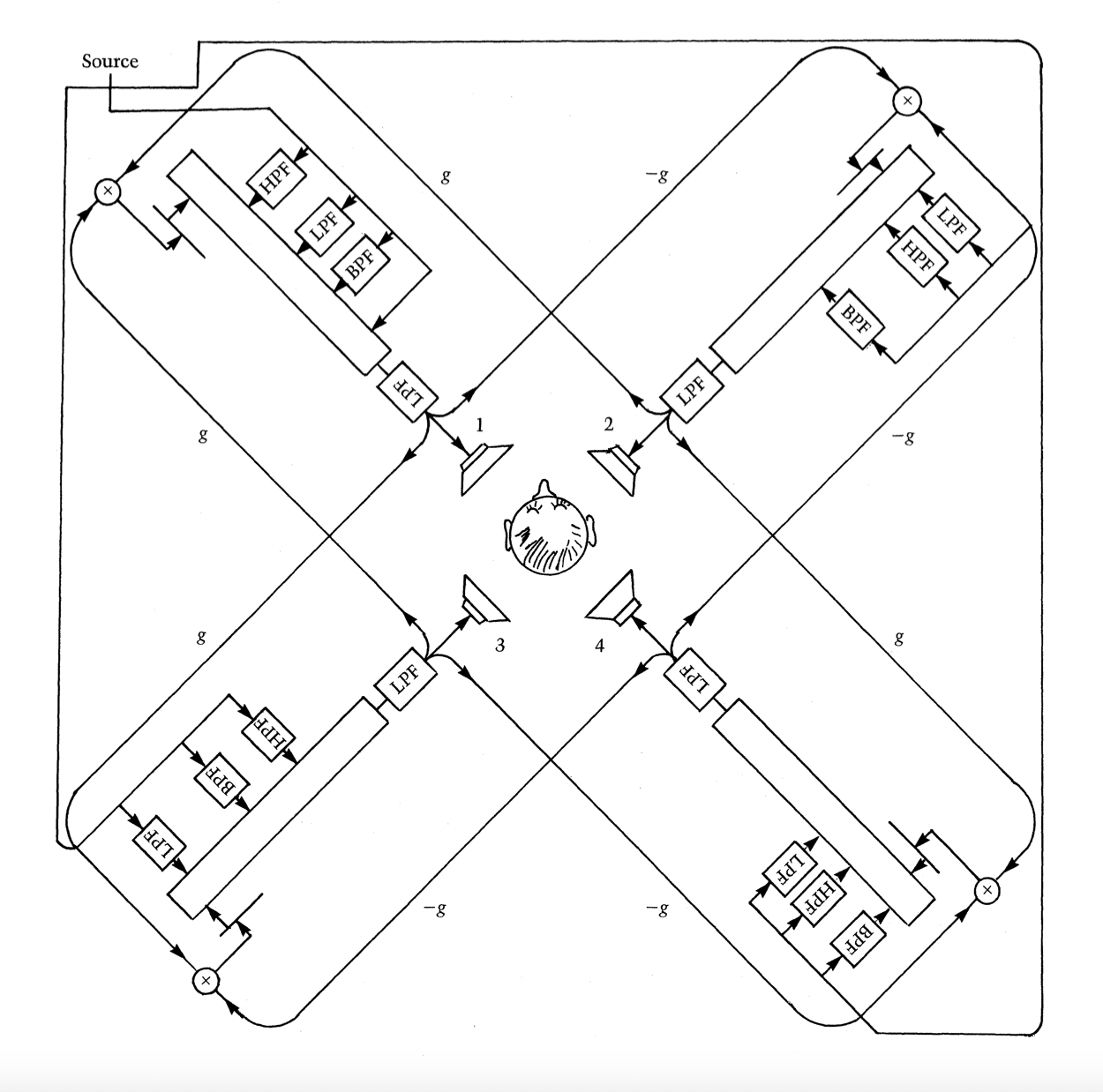Valhalla VintageVerb: The MODES

One of the main features of the Valhalla plugins is the MODE control. The Mode control is located in the lower left corner of the GUI, and will bring up a popup menu when clicked, with a list of the available modes. Each “mode” is a distinct algorithm, with different sonic characteristics. In many ways, the Mode control is the highest level control in the Valhalla plugins, as it allows for a quick switch between diverse sounding & behaving algorithms.

Valhalla VintageVerb currently has 20 unique reverb modes. The plugin originally launched with 8 modes in December 2012, and has been updated with new modes when inspiration strikes (for me, that is, as the algorithm developer). A quick list:
- Concert Hall. Based on the hall algorithms of the late 1970s and early 1980s. Huge spatial image, echo density that can be adjusted from very sparse to very dense, and lush chorusing modulation.
- Bright Hall. Similar to the Concert Hall algorithm, but with a brighter initial sound, and deeper and lusher modulation.
- Plate. Inspired by early 1980s plate algorithms. Highly diffuse, bright initial sound, high echo density, lush chorused modulation.
- Room. Emulates the sound of early 1980s room algorithms. Medium diffusion/early echo density, somewhat darker sound, chorused modulation.
- Chamber. A transparent and dense algorithm. Highly diffuse, high echo density, less coloration than Plate/Room algorithms, chorused modulation.
- Random Space. This generates DEEP and WIDE reverbs, with a slow attack, and more diffusion than the late 1980s algorithms that inspired it. The modulation uses internal delay randomization, to reduce metallic artifacts without the pitch change that can occur in the algorithms with chorused modulation.
- Chorus Space. Same as Random Space, but with the delay randomization replaced with lush chorused modulation.
- Ambience. Combines time varying randomized early reflections with a full-featured reverb tail, with the balance between early and late reverb controlled by the Attack knob. Useful for adding “air” to drums, vocals, and any place where a reverb should be felt but not heard.
- Sanctuary (added 2013). Inspired by a classic German digital reverberator from the 1970s. Discrete early reflections, a dense late reverb that rapidly builds in echo density, lush detuned modulation. Sanctuary incorporates the bit reduction and floating-point gain control used in the A/D and D/A convertors of the early digital hardware.
- Dirty Hall (added in 2014). A fresh look at the Concert Hall algorithm, with the goal being to emulate the strange fixed point and convertor artifacts of early 80s reverb hardware. Lusher and denser than the Concert Hall algorithm, with loads of warmth and grit on tap, for a roughly hewn beauty. Plug in your analog synth and send yourself into retro sci-fi heaven.
- Dirty Plate (added in 2014). All the warm and gritty artifacts of Dirty Hall, applied to an old-school digital plate algorithm. High echo density, wide stereo image, and just the right amount of metallic sheen. Drums come alive when sent through Dirty Plate.
- Smooth Plate (added in 2014). The complete opposite of Dirty Plate. Smooth decay at all settings, from short to near-eternal. Lush chorusing, with none of the metal found in Dirty Plate. The most transparent and naturalistic reverb in ValhallaVintageVerb. Crank up the Size parameter, and float off into space!
- Smooth Room (added in 2014). A smooth and transparent room reverb, in the Smooth Plate style. Useful for emulating the Room/Hall algorithms of late 1980s hardware, as well as getting clear reverberation with low amounts of coloration.
- Smooth Random (added in 2014). A random room/hall algorithm, with transparent decays that can be adjusted from tiny to huge. Randomized delay modulation, similar to Random Space, but with a much tighter initial attack and smoother decay. A good “jack of all trades” reverb algorithm.
- Nonlin (added 2014). Gated, reverse, and nonlinear reverbs are all on tap here. Use Size to control the duration of the reverb, and Attack to smoothly interpolate between a truncated reverb, a “flat” gated decay, and huge reverse reverbs. Lush chorusing modulation on tap, for your shoegazing needs.
- Chaotic Hall (added in 2017). A chaotic take on the Concert Hall algorithm, with modulation and saturation artifacts inspired by classic tape echoes. Lush and warm, with subtle wow and flutter chorusing that adds depth without making your reverb seasick.
- Chaotic Chamber (added 2017) Smooth and chaotic at the same time. A relatively “dimensionless” reverb algorithm, that adds depth to your sound. Wow and flutter modulation, subtle tape saturation. Use this algorithm on pretty much any input, and it will sound good.
- Chaotic Neutral (added 2019). Combines chaotic modulation with a fairly “colorless” algorithm architecture, for a reverb that sounds like the input – just with reverb!
- Cathedral (added 2021). An updated version of an FV-1 algorithm created by Sean Costello in 2014, Cathedral is BIG yet clear, for long, open reverb decays with ensemble modulation and a realistic rolloff of high frequencies.
- Palace (added 2023). Loosely inspired by a classic “room simulator” algorithm from the 1980s, but updated to allow higher echo density and lush modulation. Palace is perfect for room reverbs of all sizes, ranging from small drum rooms through concert halls and all the way up to giant cathedrals. The Palace algorithm sounds more realistic and open than the other room algorithms in VintageVerb, while still retaining old school digital charm.
People have asked what the best reverb modes are to use for a particular situation. While we’re fond of all the VVV modes, here’s a few starting points:
- The Dirty modes (Dirty Hall / Dirty Plate) are the ones that are most faithful to late 70s / early 80s digital hardware reverbs. When designing these modes, Don Gunn and I spent a lot of time listening to and emulating the artifacts of a Lexicon 224XL and AMS RMX-16: floating point convertor quantization, steep lowpass antialiasing filters, fixed point quantization of the audio signal, and fixed point quantization of the modulation signals (the 224XL sounds like an old modem with high amounts of modulation). The Dirty modes are the best reverb modes for adding depth and character to synthesizer sounds.
- The Smooth modes are a modern update of the “classic” Lexicon reverb algorithms. A great deal of attention was spent on having realistic & unobtrusive filtering, as well as shaping the reverb output taps for a natural exponential decay. The Smooth modes are the best reverb algorithms for “expensive” sounding vocals and realistic rooms.
- The Chaotic modes were an offshoot of the work I was doing on the tape modes in ValhallaDelay, and feature “chaotic” modulation waveforms that are close to the wow and flutter found in worn-out tape loops. The saturation in these modes is based on the complex pre-emphasis / nonlinearity / de-emphasis that is heard in tape decks. I feel that the Chaotic modes are the best reverb algorithms for longer synth verbs that still sit well in the mix.
- The new Palace mode is a great choice for any situation where you want to add “room” sound. Use a small Size setting in the Palace mode for drums, or use a huge Size for big vocal and synth reverbs.




